Ground cover roses: varieties, cultivation and use in landscape design
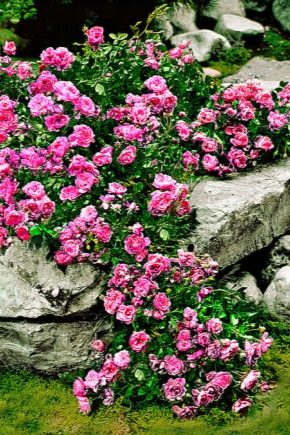
The history of the "queen of flowers" has more than one millennium. Among the different species, creeping roses were bred specifically for landscaping areas where access is difficult, therefore they have the property of covering the ground with a dense flowering carpet that does not require special care.
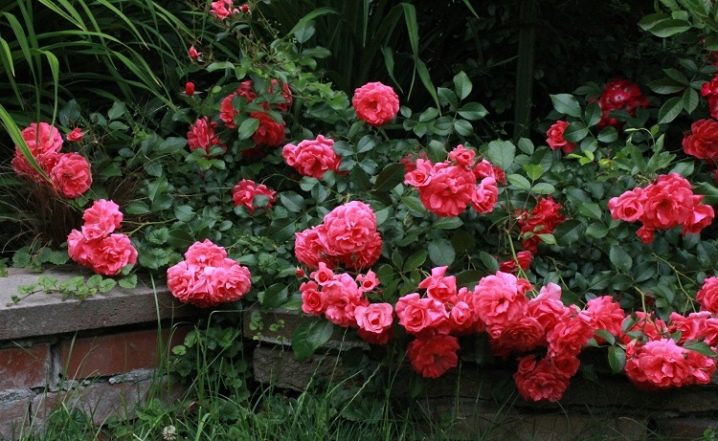
What it is?
The first mention of the rose appeared in the second millennium BC on the island of Crete. Over the past centuries, there have been ups and downs in the popularity of the beautiful flower. In the 4th century AD, roses began to be grown in Greece as a pot culture. Rome, which picked up the fashion for roses, contributed to the spread of the flower throughout Europe. New varieties were bred for growing in pots, in greenhouses and in the open field. And despite the fact that with the fall of Rome, the fashion for a rose passed, this culture managed to conquer many countries, especially British gardeners were carried away by it. More than once since then, the rose has become the queen of gardens.
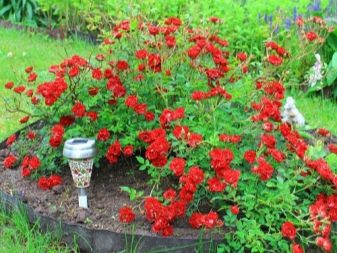
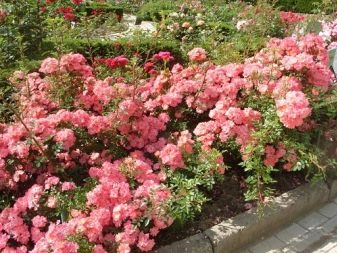
In the 18th century, the rose began to spread throughout Russia and won the recognition of flower growers. By the end of the next century, these flowers began to be grown on an industrial scale, simultaneously developing new varieties of pot and cut roses. At the same time, the first varieties of ground cover roses appeared, not yet collected into a separate subgroup. Only in the mid-70s of the last century, creeping roses were recognized as a separate subspecies of flowers, a large number of varieties of which were bred in Northern Europe.
Groundcover roses have become a garden ornament suitable for any landscape. Obtained by crossing the creeping forms of the wrinkled rose, in the common people called the wild rose, with the climbing rose "Vihura", the new group retained the ability to bloom for a long time from some and resistance to diseases and low temperatures from the other.
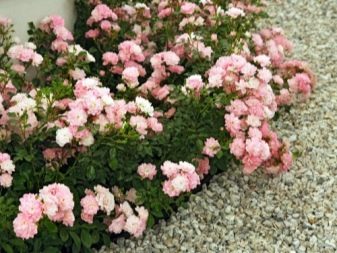
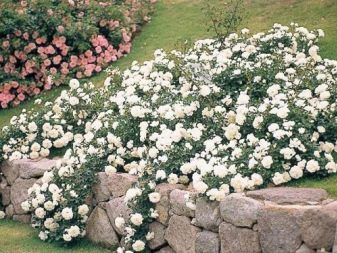
The first varieties of ground cover roses bloomed only once per summer. But gardeners, through selection, bred new varieties of roses that bloom all season from early spring to late autumn. Ornamental shrubs with lush inflorescences of various shapes from simple flowers to densely doubled ones are used as border plants, decorate complex areas of the landscape and are grown in pots as ampelous plants. Recently, a gradation of known types of ground cover roses has been adopted:
- dwarf creeping roses with a bush height of up to 0.45 m and a width of up to 1.5 m;
- low creeping ones reach a height of 0.45 m to 0.5 m and a width of more than 1.5 m;
- undersized drooping with a height of 0.4 m to 0.6 m and a width of up to 1.5 m;
- tall drooping ones grow in height from 0.9 m and in width from 1.5 m or more.
The diameter of a flower in a ground cover rose, depending on the variety, ranges from 1 to 10 cm.
Creeping rose varieties after 2 years form a dense carpet of rooted shoots, which will hide all the flaws in the landscape underneath. Varieties with drooping branches form dense bushes, which sometimes form in the form of a standard tree
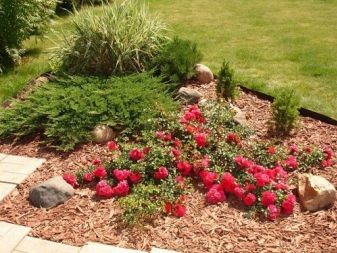
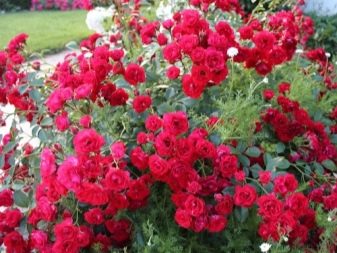
The best varieties and their characteristics
More and more flower growers, making their own rose garden, pay attention to ground cover roses. Among the many known varieties, several names are recognized as the best for our climatic zones, according to reviews of Russian flower growers.
- "Ahtiar" Is a large white rose that blooms once a summer, but with a very long flowering period. A tall shrub with flexible drooping branches up to 1.5 m long is used to decorate green hedges or borders, but can be grown in standard form.
- Fair Play - semi-double rose with flowers from pale pink at the base to fuchsia along the edge has a light aroma. A bush with drooping one and a half meter lashes in height can also reach a length of 1.5 m. It blooms up to three times per summer.
- Fiona - pink-red double flower with a diameter of 70-80 mm, collected in inflorescences, on a tall bush with drooping shoots pleases with continuous flowering from the beginning of summer until the first frost.

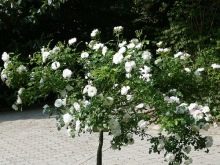
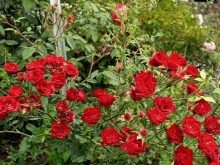
- Hello - a low creeping bush with large dense double flowers, changing color from dark red to rich cherry, withstands frosts down to -30 ° C. The odorless flowers have the thickest doubleness of all varieties of ground cover roses.
- Ballerina - simple flowers with a transition from white in the center to pink at the edges, collected in lush inflorescences, have a delicate aroma with a light musky note. During flowering, the size of the flowers increases. Tall bushes with drooping branches form a spherical shape.
- Scarlet - red double rose on a short bush with dark glossy foliage is recognized as one of the most adaptable and resistant varieties.
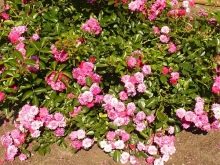


In addition to the listed varieties, the most beautiful of ground cover roses take root and bloom just as well in the Russian open spaces.
- Amber Cover - amber-yellow rose with large semi-double flowers smells pleasantly of wild rose. Spherical flowers look gorgeous on a tall bush among dark green foliage.
- Jazz - a self-cleaning bush with small semi-double flowers of a beautiful color: copper-orange at the beginning of flowering, gradually acquiring a peach color. Abundantly flowering bushes are well suited for massifs, but can be grown in small groups or in narrow plantings.
- Swany - white with a pale pink center, dense double flowers of the best variety of ground cover roses bloom on a low spreading bush with small evergreen leaves. Thanks to the shape of the bush, the rose looks good on the slopes or on the trellis. It blooms up to three times during the growing season.
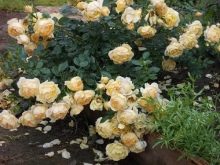
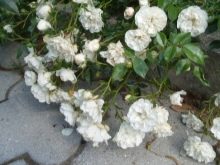
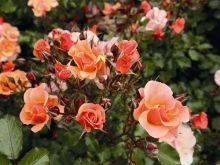
But every gardener chooses flowers that he likes, so for some, completely different varieties of roses will be the best. The main thing is to choose the right variety in accordance with the place where the flowers are to grow.
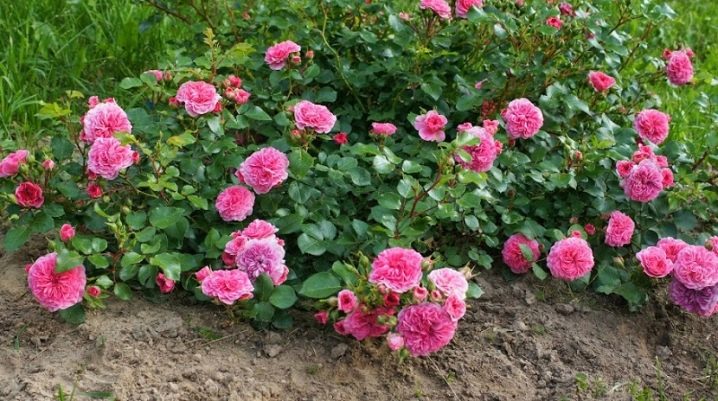
How to choose?
If it is not possible to see the flower live, they choose roses for planting on the site, focusing on the description of the variety. All nurseries, offering flower seedlings, indicate in the description under what climatic conditions this rose will show itself from the best side. The main selection criteria are:
- frost resistance;
- disease resistance;
- flowering time and flowering duration.
According to the system of dividing the planet into climatic zones of winter hardiness (USDA) developed in the United States, 9 zones have been identified in Russia with a minimum temperature spread from -46 ° C and below for the first zone to -1 ° C for the ninth. Moscow and the Moscow region are in the fourth zone, Siberia covers the second and third, Sochi is located in the ninth zone.
Knowledge of the uniform classification of zones will help when choosing seedlings from foreign nurseries.
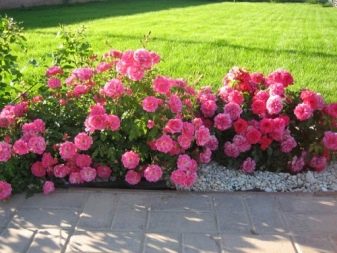
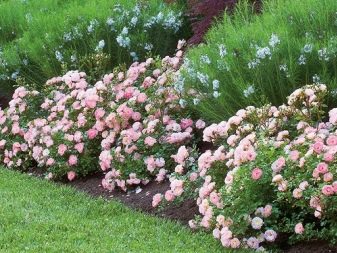
Siberia and the Urals are characterized by long winters with severe long frosts and late spring. The relatively short summers with few warm days and sharp temperature fluctuations during the day and at night dictate their own conditions for the selection of suitable varieties of roses. It is best to purchase zoned varieties grown in local nurseries for growing flowers in Siberia and the Urals.You can also buy bushes in Canadian nurseries, as the closest in climatic conditions. Roses grafted on local rose hips tolerate severe winters very well, as it has strong immunity and is resistant to weather changes.
For the Moscow region, there are all 4 seasons with the corresponding temperature for each of them. When choosing roses, you need to consider:
- plant resistance to temperature fluctuations;
- resistance to diseases, since rare sunny days and high humidity cause fungal infections;
- undemanding lighting due to shorter daylight hours.
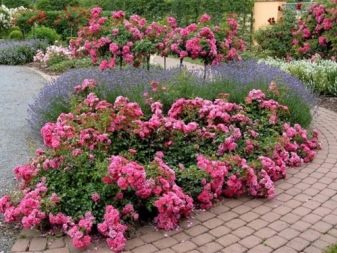
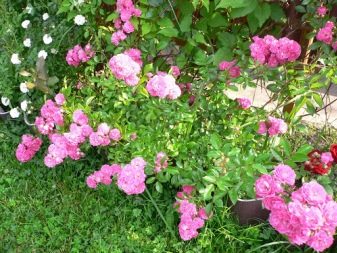
Central Russia is famous for its harsh winters with sharp temperature fluctuations. Roses selected for cultivation in this climate should:
- be frost-hardy, and the seedlings have good health to survive the winter;
- have a long flowering period and retain decorativeness in any weather;
- have active growth and throw out many shoots, so that in case of unfavorable wintering, the plant can easily restore its decorative effect.
When choosing roses for your garden, heed the advice of experienced gardeners when purchasing seedlings from nurseries located in your area.
The varieties bought there will already be acclimatized and will more easily withstand moving and planting.

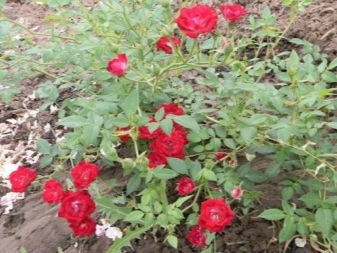
Landing rules
Roses are planted following a number of simple rules.
Selection and storage of seedlings
To choose a healthy seedling, it is important to pay attention to the following signs:
- a high-quality seedling has at least three developed shoots and healthy roots without rot and mold;
- the bush of the bush is dense, clean, without white bloom, spots and damage;
- if the rose is grafted, then the scion and rootstock should have the same thickness with a diameter of a pencil;
- high-quality seedlings may have leaves, but they should not have elongated, slightly colored shoots;
- bushes take root best at the age of 2-3 years.
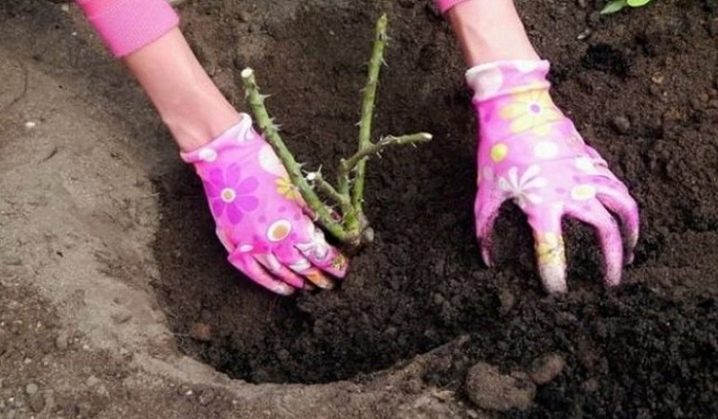
Before planting in a place where the rose will grow constantly, the seedling is pruned, leaving the length of the shoots about 30 cm, and if the rose was grafted, then all the buds below the rootstock are removed. Sections are treated with copper sulfate or other fungicides. And also the plant can be treated with "Intavir" to protect against aphids and ticks.
Rose bushes for planting are sold with an open root system, in a container and in planting bags.
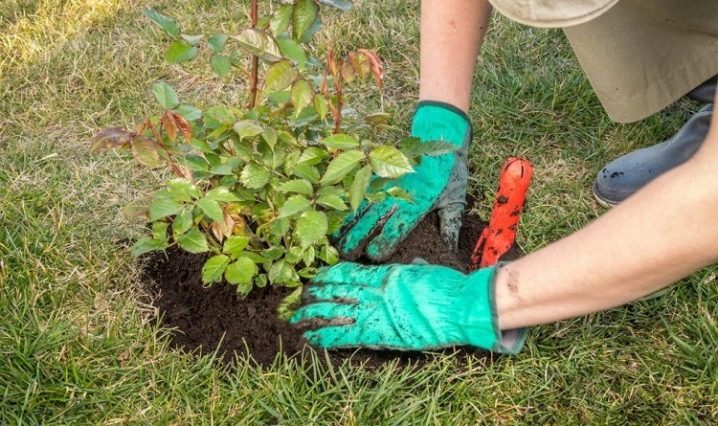
If you bought a sprout with an open root system, then it is best to plant it on the day of purchase, after soaking the roots for 4-12 hours in water. After that, you need to cut the root by about a third, if it is long, and plant the plant, carefully straightening the roots. If the planting is postponed for some time, then the roots of the seedling are wrapped in moist peat, sawdust or moss, covered with plastic wrap and stored in a cold place, from time to time ventilating the root system.
If the seedlings were bought in the fall, then it is better to store them until spring planting at a temperature of 1 ° C in the cellar, having dug them completely into a box with wet sand.
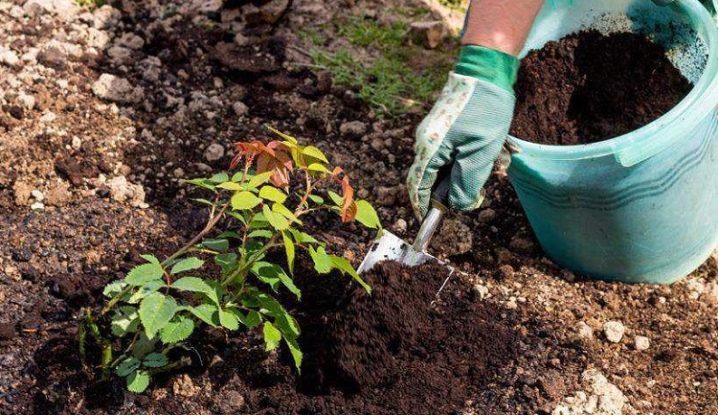
When buying a plant in a container, it is important to ensure that the root system tightly braids the entire earth ball. In a healthy, high-quality plant, the root is easily removed from the container along with the soil. This means that the seedling is grown in a container, and it is not afraid of transplanting, even in flowering form. If the seedling is removed separately from the ground, or the roots take up little space, then the plant has been transplanted and the quality of the seedling is not guaranteed. It is easiest to store seedlings in containers, since there are no problems with watering and ventilating the roots.
Dormant seedlings in planting bags are stored as plants with an open root system.
But if the plant begins to grow prematurely, it must be transplanted into a flower pot in order to avoid the death of the flower.
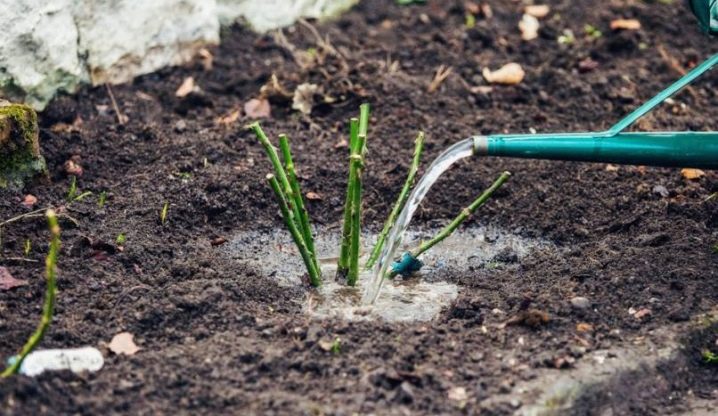
Disembarkation time and place
Before buying rose seedlings, you need to prepare a planting place for them.You need to choose a site taking into account the fact that ground cover roses form a ground carpet of shoots, and they need free space for growth. The best size for the planting area should match the diameter of an adult bush.
The place for planting must be chosen taking into account the fact that roses do not react well to strong shade and direct sunlight. In heavily shaded areas, the bushes become weak, their root system does not develop well, and flower buds die. When the direct rays of the sun hit the flower petals, burns are formed, which leads to a loss of decorativeness, drying out and falling off of the buds. Best suited for planting are the western or southeastern slopes, or those places where a light shadow forms during the midday sun.
And you also need to make sure that there is no stagnation of water at the selected place, and the groundwater does not come close to the surface. Excess moisture harms the root system of the rose bush, making it difficult for oxygen to reach the roots, and in severe winter frosts, the bush will freeze out.
If you really want to plant roses in such a place, then it is necessary to carry out drainage work to remove excess moisture.
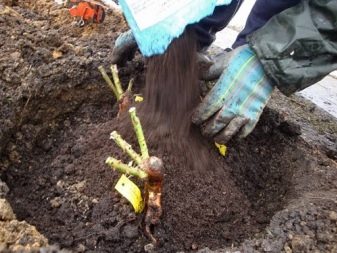

Roses grow best on loamy soils, where water and oxygen easily penetrate the perennial roots. Sandy soils dry out too quickly, therefore, before planting the plant, a mixture of peat, compost, sod and clay is added to the ground, and heavy clay and stony lands are loosened with a mixture of sand, peat, compost and bird droppings.
Roses love neutral or slightly acidic soil, so before planting, it is necessary to correct the acidity. You can find out the acidity of the soil using special devices or litmus paper sold in specialized stores for gardeners and gardeners. If it is not possible to buy such a device, then the weeds growing on the site will tell you approximately what the acidity of the soil is in the selected place. The abundance of nettle, wheatgrass, clover or bindweed signals that the area is alkaline, and horse sorrel, bum, horsetail, chamomile or mint grow well in acidic soils.
In order to neutralize the acidic soil, wood ash, slaked lime or dolomite flour are added to the ground. The latter is best suited for sandy soils.
To improve alkaline soil, gypsum, bog peat, rotted manure with the addition of superphosphate or pine needles, which also mulch heavy soil, are used.
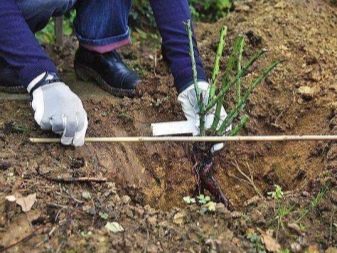
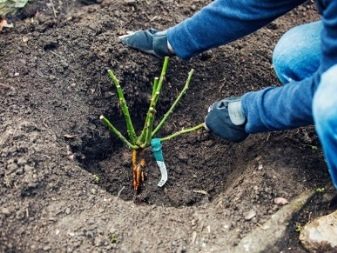
Taking into account the fact that after the growth of roses it will be difficult to care for the soil, it is necessary to remove all plant roots during digging of the earth, especially weeds such as sow thistle, spurge and bindweed. It is better to pre-treat the weeds and soil with herbicides such as "Zenkor", which affects the seeds of weeds in the soil, or "Tornado", which is good at destroying malicious weeds such as wheatgrass or sow thistle. The land for planting is dug to a depth of 70 cm, and after planting the plants, the space between them is mulched.
Before planting a plant, a hole is dug in the prepared soil with a depth of 0.5-0.7 m and the same diameter, on the bottom of which the drainage is laid with a layer of about 15 cm. A layer of soil is poured over the drainage so that a small elevation in the center is formed. A seedling is attached to this hill with such a condition that the root is located on the slopes of the mound, and the sprout itself is located straight. After that, the hole is filled with soil, tamping and watering each layer of earth so that voids do not form near the roots. When the hole is filled, the soil should be tamped, watered and mulched, and the seedling should be protected from the sun for a couple of weeks.
If a grafted rose is planted, then the grafting site is buried in the ground to a depth of 3 to 10 centimeters.
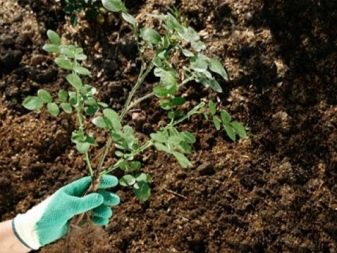
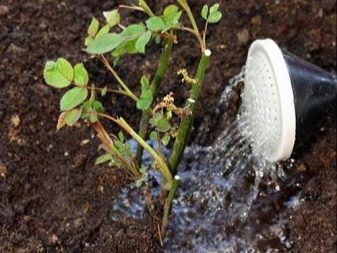
You can plant a rose in spring and autumn. The timing of planting depends on the climatic region. Where winters are rather mild, it is best to plant a rose in the fall a month and a half before the onset of cold weather.During this period, the root system of the bush will be fixed in the soil, and the flower will calmly overwinter, and in spring it will delight with early flowering. But for risky farming areas where winters are long and harsh, rose bushes are planted from May to mid-June. This is necessary for the flower to grow stronger after transplanting and prepare for wintering. For the same reason, all buds on seedlings of the first year are removed, allowing the plant to gain strength.
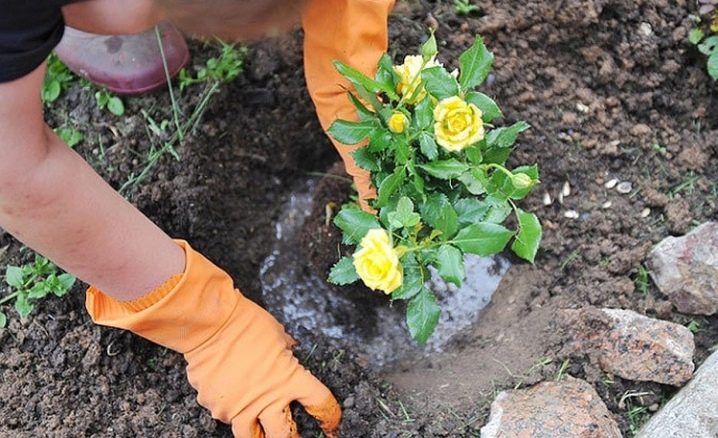
How to care?
Caring for ground cover roses is simple. The main thing is to water, fertilize, prune bushes on time, as well as prevent diseases and fight pests.
Watering
The first time after planting, ground cover rose bushes need to be watered every 6-7 days. Watering should be done in the morning under the root of the plant and make sure that the water does not stagnate. Matured bushes are watered when the top layer of the earth dries up, making sure that the soil is not waterlogged. It is necessary to water the plants when the soil dries out three to four centimeters deep, using warm water, at the rate of one bucket of water per bush. In autumn, watering is gradually stopped.
For a better flow of water and air to the roots, the soil under the bushes is loosened and mulched, simultaneously removing weeds.

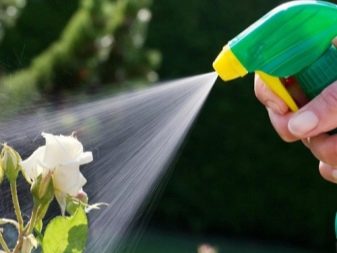
Top dressing
During the season, roses that bloom once are fed three times with fertilizers. Fertilizer is applied for the first time a couple of weeks after the appearance of the first leaves, using special multicomponent fertilizers for flowering plants containing nitrogen, phosphorus and potassium. The next feeding is carried out after 4-5 weeks, but before flowering begins. At a time when there is an intensive flowering, the roses are not fed. But if the rose blooms several times during the season, then before each flowering wave it is necessary to carry out additional feeding, removing the wilted flowers.
The last time in the season, the flowers are fertilized in the fall, applying only potash fertilizers for better ripening of the shoots.
This technique will allow the plants to winter better.
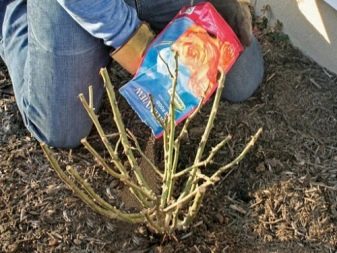
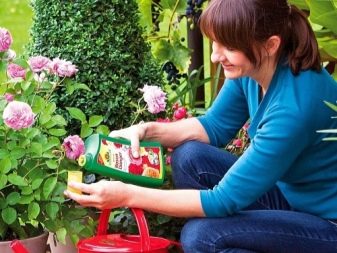
Pruning
An important point in caring for a rose is the correct pruning of the bushes. Although it is believed that ground cover roses should grow freely and form a bush on their own, proper pruning of plants will help keep the bush decorative longer and ensure long-term flowering.
For creeping roses, it is important to cut off dead shoots in the spring, and during the summer to remove faded buds if the plant does not shed them by itself.
If the bushes have drooping branches, then they are pruned in the fall, shortening the shoots for better wintering. Spring pruning allows you to shape the bushes for greater decorativeness. And once every 5 years, rejuvenating pruning is carried out, shortening all shoots to a length of 25-30 cm.
It is especially important to cut off excess shoots on bushes grown in standard form, giving the learned tree a beautiful well-groomed look.
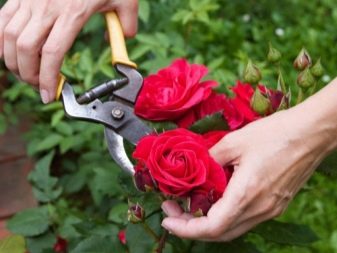
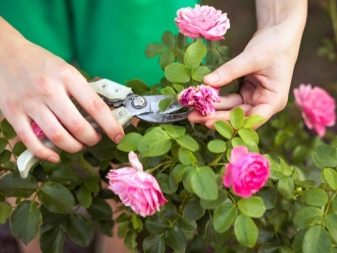
Disease and pest control
Ground cover roses are resistant to many diseases, but in order to keep beautiful flowers healthy, it is necessary to carry out prevention.
Fallen leaves are collected and burned in autumn. If possible, they dig up the soil with a turnover of the layer so that pests die from a lack of light and oxygen. Cut off the affected branches. If you had to cut a diseased plant, then after removing the affected areas, the pruner must be processed so as not to transfer the infection to another bush. After removing dried and excess shoots, the cut points, especially on thick branches, must be treated with a solution of copper sulfate.
To prevent fungal diseases of roses, before flowering and before leaving the plant for winter rest, the bushes are treated with fungicides, sprayed with Bordeaux liquid or iron vitriol. These are diseases such as:
- powdery mildew;
- gray rot;
- bacterial cancer;
- rust;
- black spot.
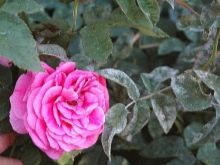
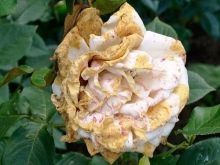

Like any plant, roses can be affected by pests:
- green aphid;
- thrips;
- spider mite;
- rose leafhopper;
- sawyer;
- scoop;
- walnut;
- weevil beetle;
- bronze;
- caterpillar-leafworm;
- leaf cutter bee.
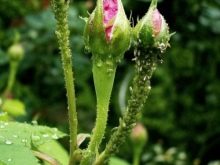
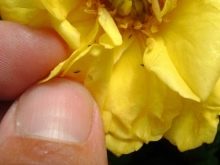
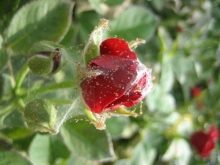
All these insects, one way or another, damage flower seedlings. They suck out juices and eat leaves, which makes the plants weaken, lose their decorative effect and may die. To combat insects, preparations of the Iskra, Iskra-M, Tornado series or other pesticides are used.
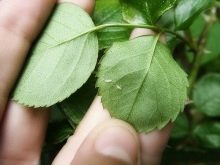

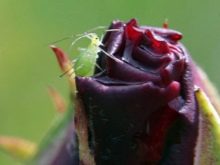
How to prepare for winter?
Despite the unpretentiousness of ground cover roses, in the fall it is necessary to prepare the bushes for wintering. Low-growing, frost-resistant bushes can hibernate without shelter if the snow cover is high. And tall bushes may need shelter, especially where there are severe winters. Long branches of the bushes are bent to the ground and covered with spruce branches. Cover from above with acrylic or a cardboard box, suitable in size. Small bushes can be covered with plastic buckets. For the flow of fresh air, a gap is left between the soil and the covering tank. This will save the bushes from decay and premature growth.
But the decision, whether or not to cover ground cover roses, remains with the owner of the flower garden.
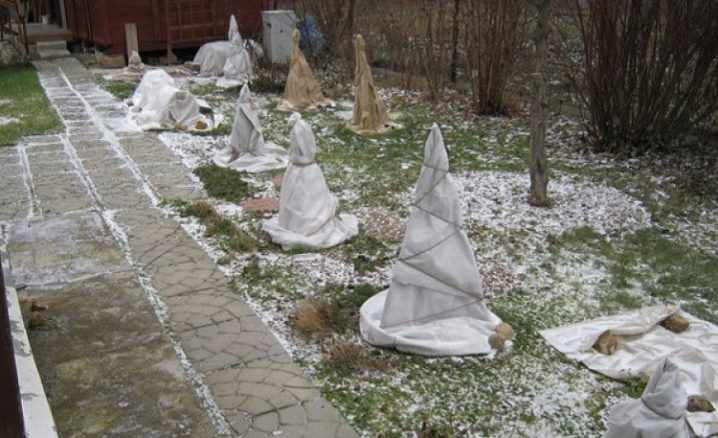
Use in landscape design
Unpretentious ground cover roses, thanks to long and lush bloom, will decorate any garden. A properly designed scheme for planting roses and their accompanying flowers will help create a unique landscape.
Creeping roses are used to create colored spots on a green lawn, and as a potted culture, they form picturesque cascades dotted with flowers.
The slopes covered with a flower carpet formed by ground cover roses look very picturesque.
Creeping roses also found their place on the alpine hills, creating a unique landscape with a combination of delicate flowers and rough stone.
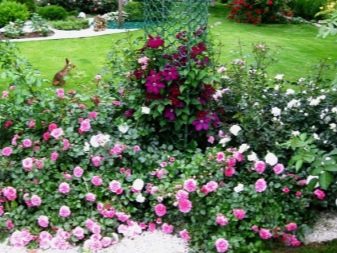

Tall varieties with long flexible shoots become soloists in the floral ensemble, emphasizing the sophistication of the landscape.
Fragrant curbs, hedges of ground cover roses will effectively divide the site into different zones.
Some types of roses with long shoots are suitable for decorating gazebos or gates, forming tall bushes, densely strewn with flowers.
For almost any landscape, you can pick up ground cover roses, which, in addition to the decorative function, will serve to improve the condition of the soil and hide defects.
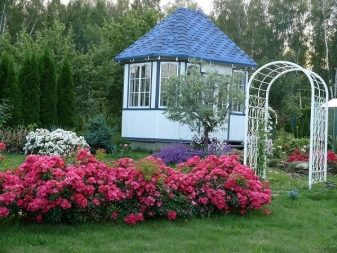
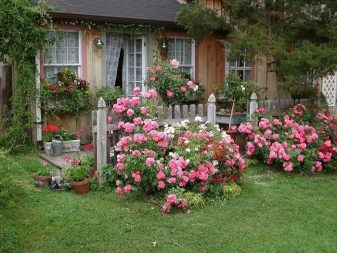
Watch a video on the topic.

































































































The comment was sent successfully.